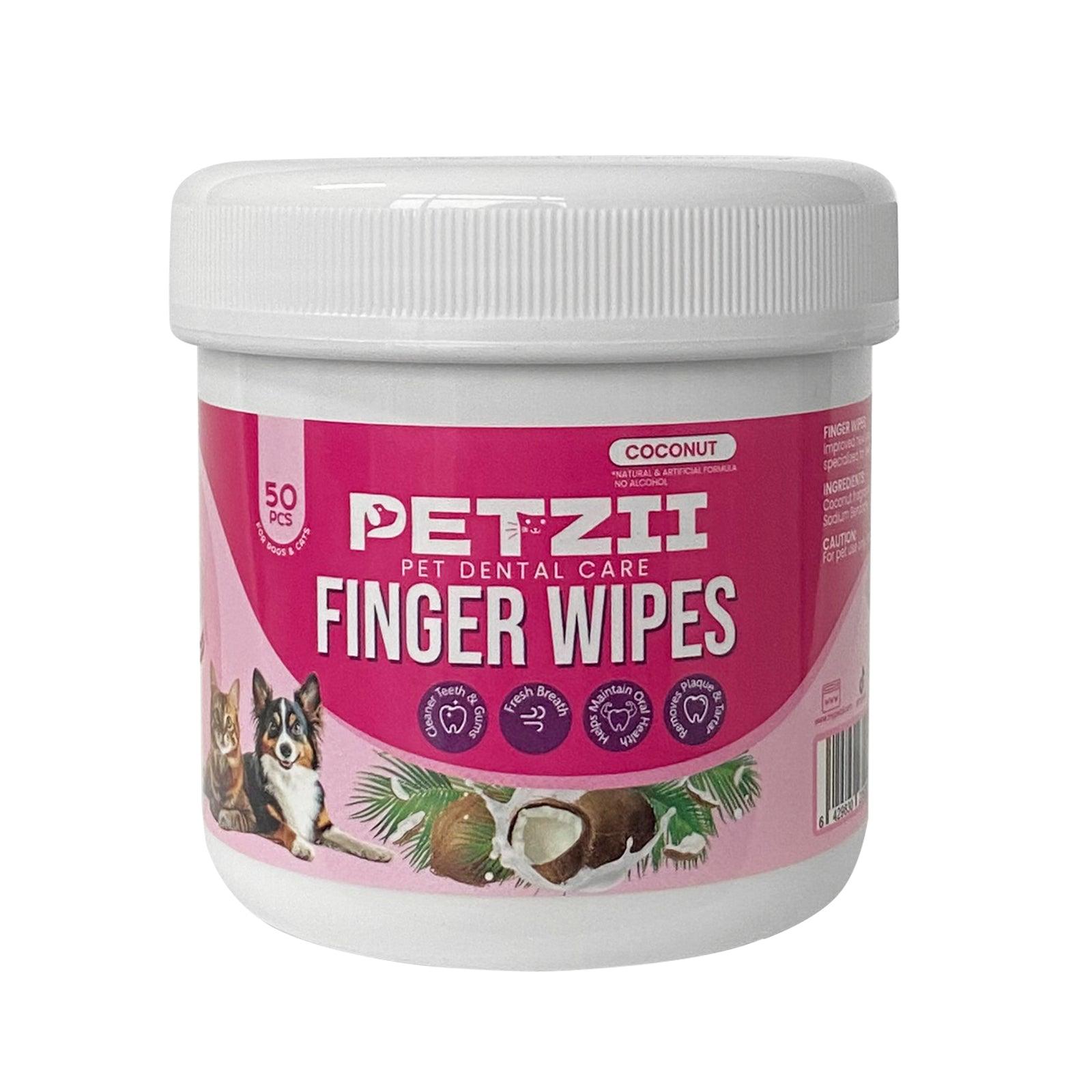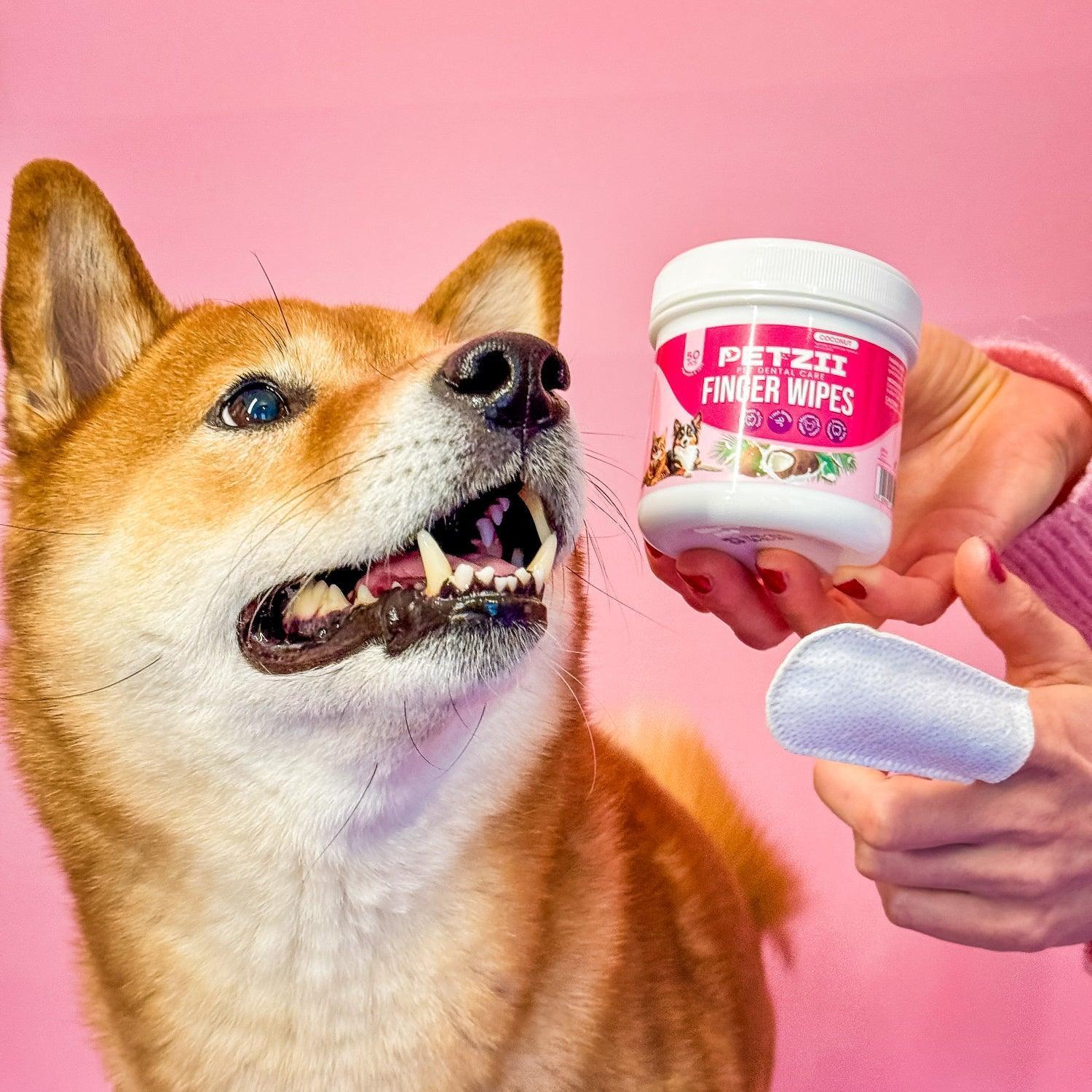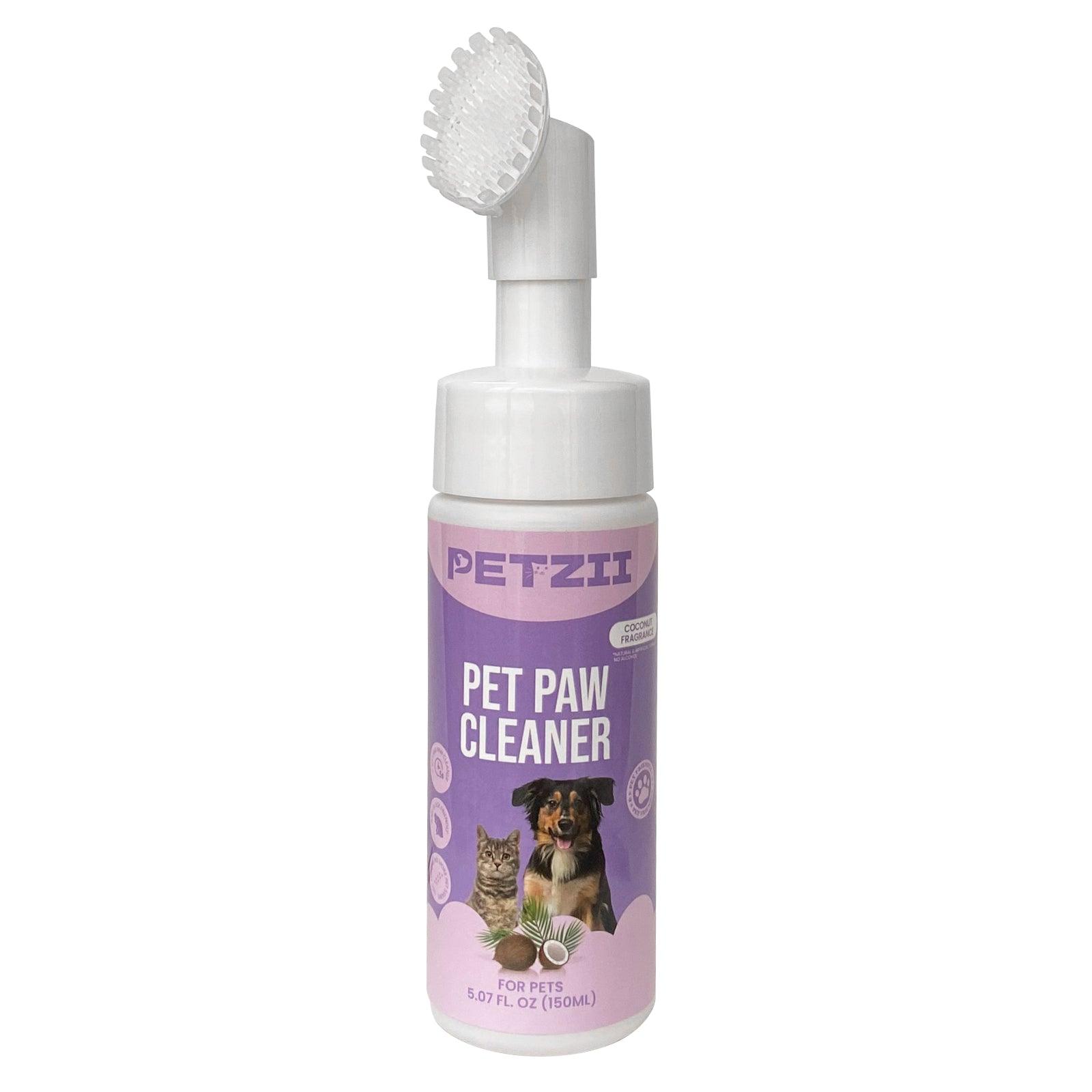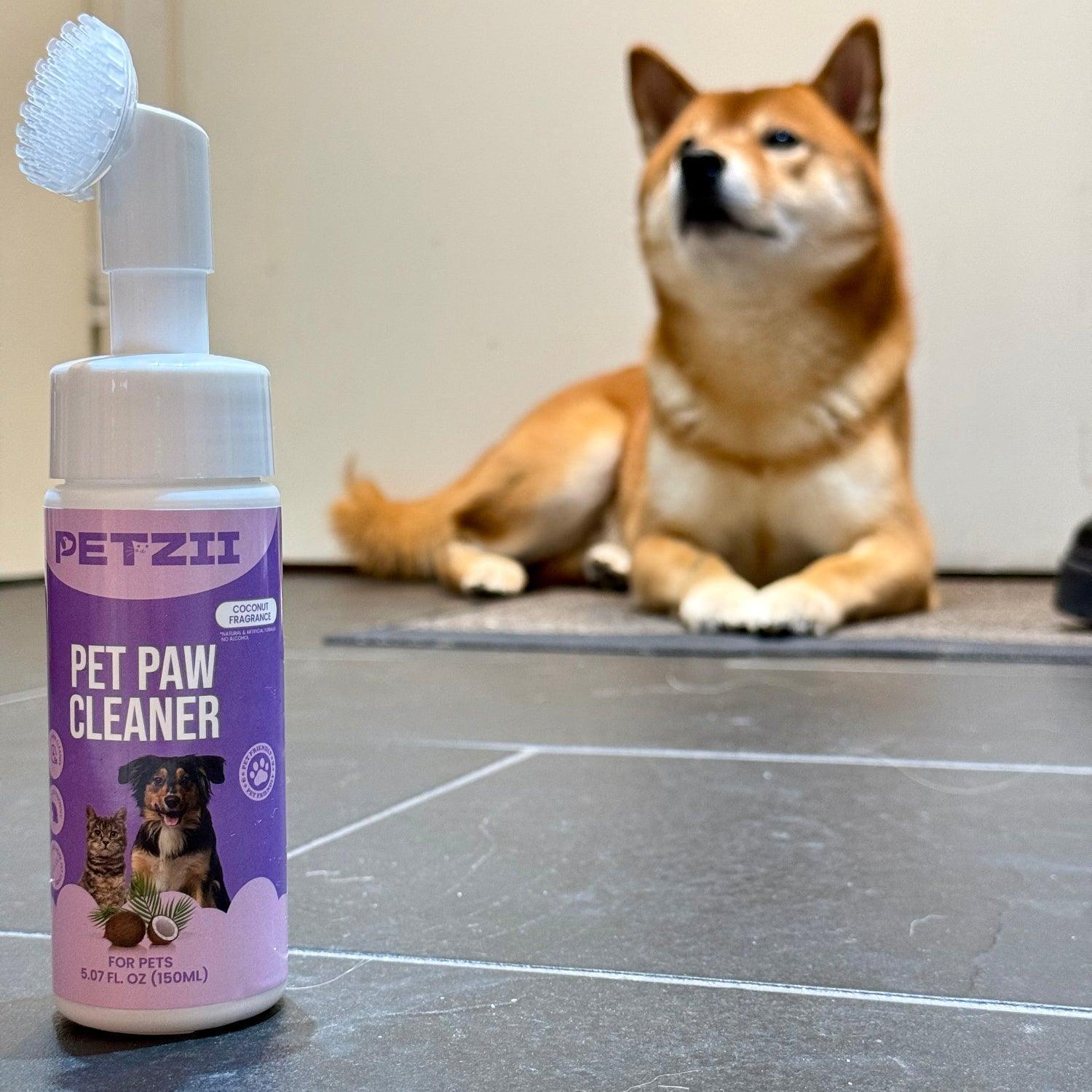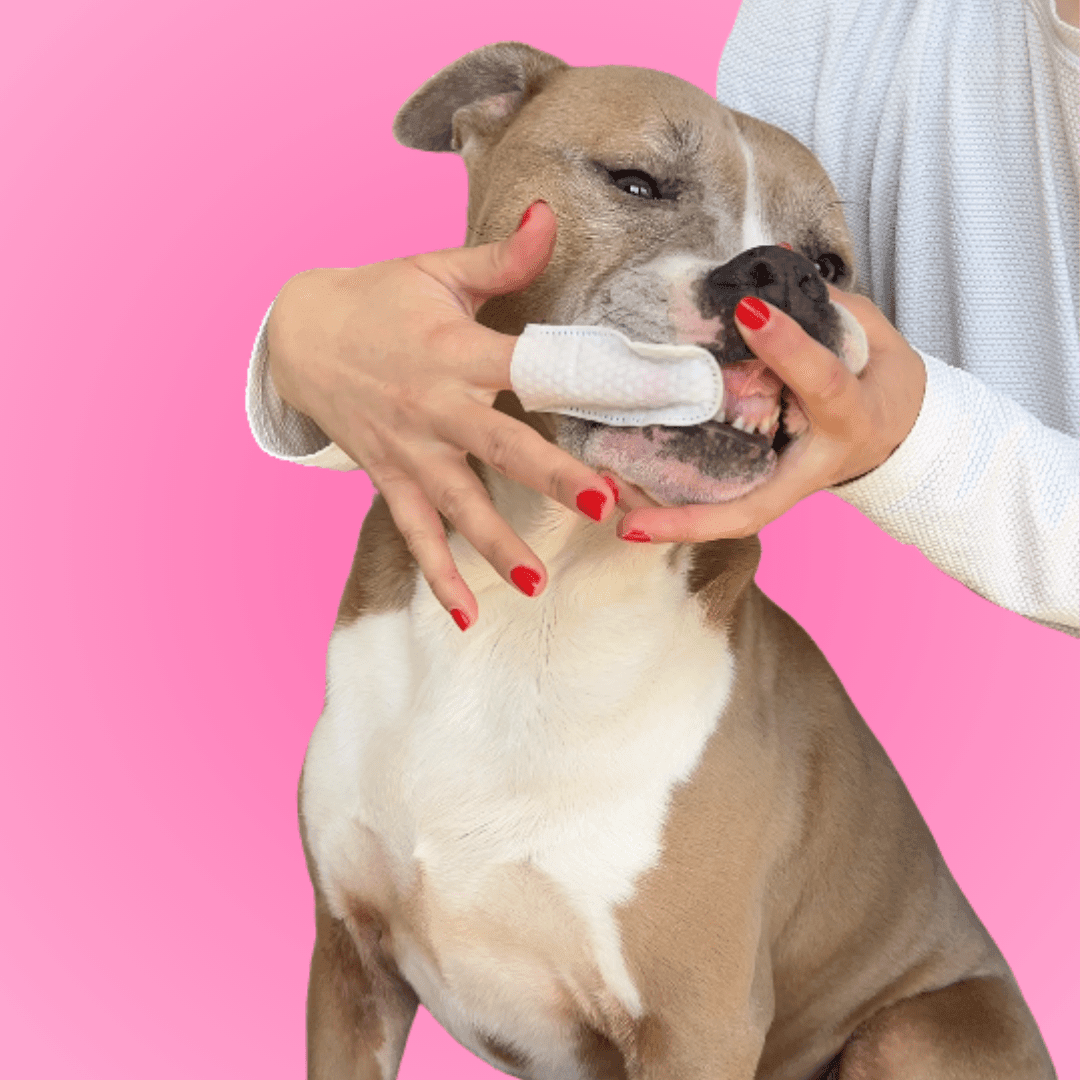
· Von Mette Mäkinen
The Complete Guide to Dog Teeth Cleaning: Easy At-Home Tips That Actually Work
🦷 Table of Contents
Introduction: Why Dog Dental Health Matters
The health of a dog’s teeth ranks as one of the essential yet often ignored aspects of canine wellness, which determines their total health condition. The American Veterinary Medical Association states that dental disease affects more than eighty percent of dogs when they reach the age of three. Dental disease creates more than mouth problems because it causes persistent pain along with tooth loss and systemic infections that damage vital organs including the heart, liver, and kidneys.
A proper dog dental hygiene routine serves multiple purposes, including preventing periodontal disease and bad breath reduction while improving life quality. This guide contains the complete information dog owners need about dog dental anatomy, together with at-home cleaning recommendations that include dental wipes for establishing lifelong oral health.
How Many Teeth Does a Dog Have?
Knowing the structure of a dog's mouth provides the foundation for correct pet care. The normal puppy dental development includes 28 baby teeth that start appearing during three weeks of age before falling out by six months. Adult dogs possess 42 permanent teeth, consisting of 20 teeth on their top jaw and 22 teeth on their lower jaw.
These include:
- Incisors – For scraping meat and grooming
- Canines – For tearing and defense
- Premolars & Molars – For grinding and chewing
Keeping all dog teeth in optimal condition protects you from expensive veterinary procedures and tooth extraction surgeries in future years.
Common Dental Problems in Dogs
Poor oral care leads to multiple serious health problems which can develop quickly. The most common include:
- The formation of plaque through bacteria in food residue creates sticky deposits which turn into tartar and result in gum inflammation
- Gingivitis and Periodontal Disease – Progressive infections of the gums and supporting tissue
- Tooth Fractures – Typically result from chewing hard objects such as bones and antlers
- Halitosis (Bad Breath) – A signal of deeper bacterial overgrowth or disease
Research indicates that dogs who participate in regular dental care experience decreased systemic inflammatory markers by 20–30%.

The Step-by-Step Process of Brushing Your Dog’s Teeth
Professional dental practitioners agree that brushing your dog’s teeth represents the best approach to prevent plaque and tartar formation. Here's how to start:
- Select pet-specific toothbrushes and toothpaste, as human toothpaste contains ingredients that can harm dogs
- Start Slowly – Let your dog lick the toothpaste and sniff the brush
- Lift the Lips Gently – Expose the outer surface of the teeth
- Use Circular Motions – Brush gently along the gumline
Daily tooth brushing is best, but even three to four times per week provides positive results.
Many dog owners struggle with brushing their dog’s teeth regularly. Dog dental wipes present an easier solution for those who find toothbrushing troublesome.

Dog Dental Wipes: A Convenient Alternative
Dog dental wipes represent a popular oral health solution, especially for dogs that avoid toothbrushes. These soft, finger-wrapped cloths contain gentle cleaning agents to remove plaque and freshen breath.

Petzii Pet Dental Finger Wipes have a textured design to clean away buildup while using coconut and plant-based substances for painless everyday use. Their easy-to-use design makes them suitable for small breeds, older dogs, and people with limited time.

Dog Teeth Cleaning Cost: Professional vs. At-Home
Professional dog teeth cleaning that requires anesthesia stands as the most complete dental procedure, but it comes with significant expenses. According to the American Animal Hospital Association (AAHA), professional cleaning costs range between $300 and $700, not including extractions and X-rays.
Using dental wipes for daily maintenance reduces the need for professional dental care and minimizes both financial costs and health risks associated with anesthesia.

Signs of Dental Issues: What Is Dog Teeth Chattering?
The behavior of dog teeth chattering remains unclear to most people. Tooth chattering can be caused by both excitement and cold temperatures, yet it may also manifest as a dental symptom.
- Tooth pain or sensitivity
- Neurological disorders
- Severe anxiety or stress
- Oral infections or jaw misalignment
You should arrange a dental examination with your veterinarian whenever your dog displays repeated or sudden chattering. Using Petzii Dog Dental Wipes regularly helps ease discomfort from dental inflammation or plaque buildup.

Conclusion: Building a Healthy Dental Routine
Dental health is not a luxury—it’s essential. Just like walking and feeding, dog teeth cleaning should be part of your daily care routine. Maintaining good oral hygiene shields dogs from painful infections, chronic diseases, and early aging.
Experts recommend:
- Daily or every-other-day cleaning with Petzii Dental Finger Wipes
- Weekly visual checks for tartar, bleeding, and swelling
- Professional cleanings every 6–12 months for high-risk dogs
Your dog’s dental care is a daily act of love—and one that adds years of health and happiness to their life.

References
-
American Veterinary Medical Association. (2023). Dog Dental Care. Retrieved from https://www.avma.org
-
American Kennel Club. (2023). Dog Teeth Anatomy & Development. Retrieved from https://www.akc.org
-
University of Pennsylvania School of Veterinary Medicine. (2022). Oral Hygiene and Inflammatory Markers in Dogs.
-
American Animal Hospital Association. (2023). Veterinary Dental Cost Estimates. Retrieved from https://www.aaha.org

